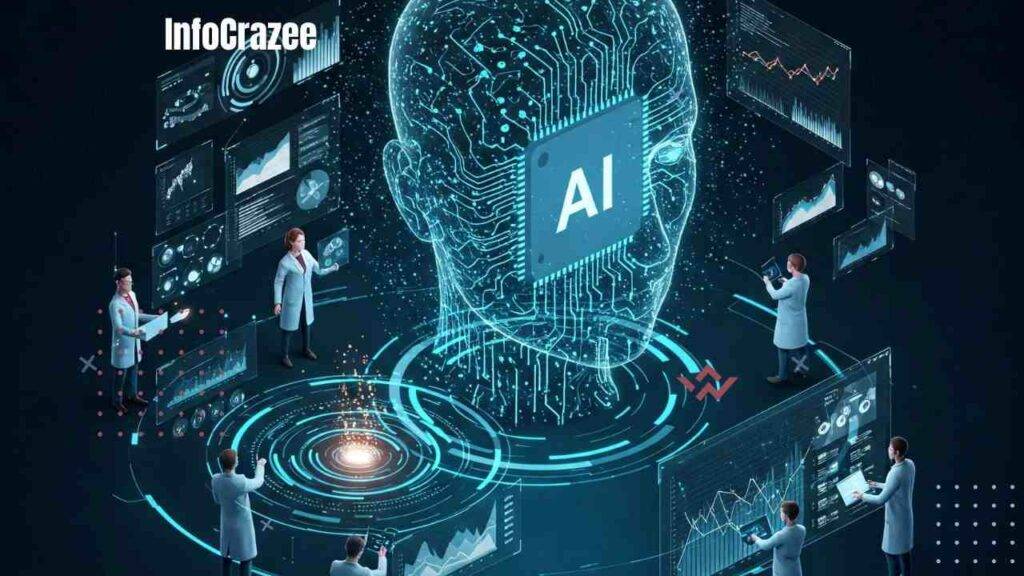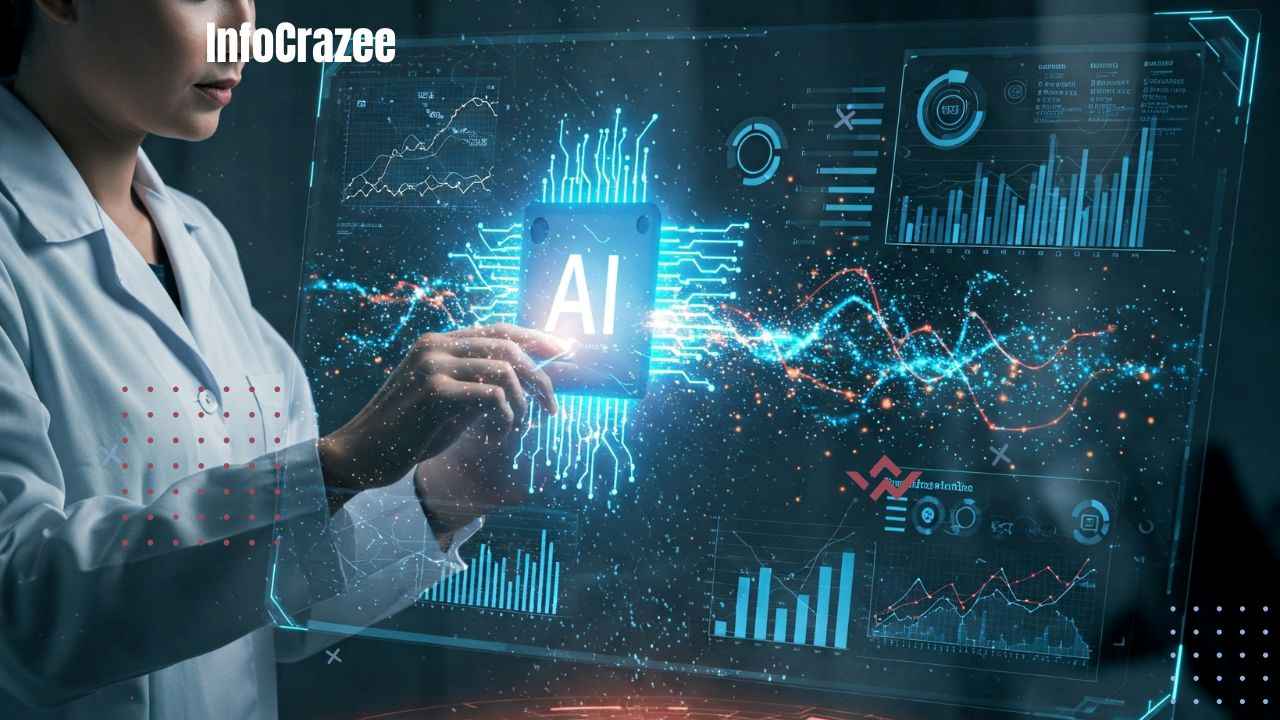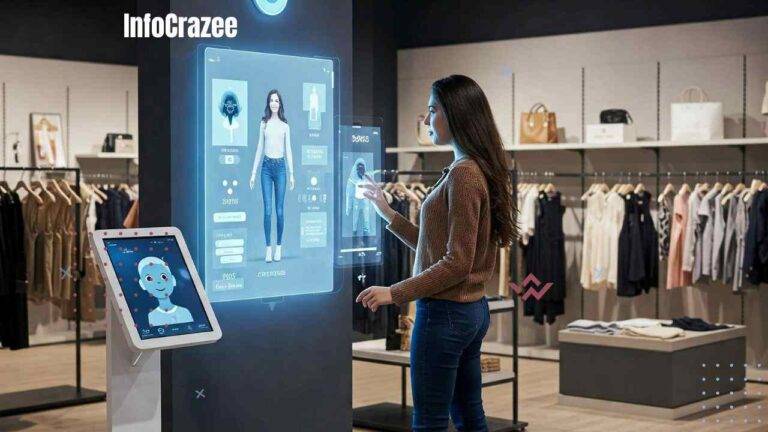How AI Is Making Predictive Analytics Smarter and More Accurate
Have you ever wondered how companies seem to know what you might buy next or when your favorite product is about to go on sale? It’s not magic—it’s predictive analytics, and thanks to AI, it’s getting a serious upgrade.
At infocrazee, we’re all about breaking down tech buzzwords in a way that actually makes sense. So let’s take a look at how artificial intelligence is turning predictive analytics into a smarter, faster, and more accurate tool for decision-making.
What Is Predictive Analytics?
Let’s start with the basics.
Predictive analytics is a way of using data to guess what might happen in the future. Think of it like reading digital tea leaves. By looking at trends, patterns, and past behaviors, predictive analytics can help businesses and individuals make smarter choices.
Examples include:
- Retail stores predicting shopping trends.
- Banks spotting potential fraud.
- Healthcare providers forecasting patient needs.
In the past, this was all done using simple models and historical data. But now AI is stepping in—and changing the game.
How AI Supercharges Predictive Analytics
AI brings a whole new level of intelligence to predictions. Instead of just looking at the past, AI can analyze massive amounts of data, spot patterns humans might miss, and even adapt in real-time.

Here’s what AI brings to the table:
1. More Accurate Predictions
AI doesn’t just look at a few variables—it can consider hundreds or even thousands of data points all at once. That means it can make smarter predictions that are way more accurate.
💡 Example:
An airline using AI can predict when planes are most likely to need repairs—before anything actually breaks. That saves money and keeps passengers safe.
2. Faster Results
AI tools can process huge datasets in minutes instead of hours or days. So decisions that used to take a team of analysts a week can now happen almost instantly.
💡 Example:
An e-commerce site can adjust its pricing based on current demand, customer behavior, and competitor prices—automatically and in real time.
3. Learning and Improving Over Time
AI systems learn as they go. The more data they’re fed, the better they get. That’s something traditional analytics tools can’t really do.
💡 Example:
Streaming services like Netflix use AI to get better at recommending shows based on what you actually watch—not just what’s popular.
Real-World Applications You’ve Probably Seen
Let’s take a look at how this works in everyday life. Here are a few examples where AI-powered predictive analytics is already at work:

🛍️ Retail
Stores use AI to forecast product demand, track customer behavior, and suggest items you might love. Ever see a product recommendation that felt too accurate? That’s AI doing its thing.
🏥 Healthcare
Hospitals can use predictive models to identify which patients might need urgent care, even before symptoms show up. That means earlier treatment and better outcomes.
🚗 Transportation
Ride-sharing apps like Uber or Lyft predict where and when demand will spike. That helps them send drivers to the right place at the right time.
💳 Finance
Banks and credit card companies detect fraud by spotting unusual patterns in spending—faster than a human ever could.
Why This Matters for Everyone
Even if you’re not running a business or working in tech, AI-powered predictive analytics affects your daily life.
Here’s how:
- You get better recommendations (music, shows, products).
- You might pay less for flights or ride-shares during off-peak times.
- You benefit from safer, more reliable services (like healthcare or transportation).
It’s not just about numbers—it’s about making life a little easier, safer, and more convenient.
The Challenges to Keep in Mind
Of course, nothing is perfect. Even AI has its limits. Here are a few things to be aware of:
- Bias in data: If the data is flawed, the predictions can be too.
- Privacy concerns: More data means more questions about how that data is used.
- Over-reliance on AI: Humans still need to be in the loop to make sure decisions are ethical and reasonable.
That’s why it’s important to use AI responsibly, especially when making decisions that affect people’s lives.
Final Thoughts
AI is changing predictive analytics in a big way. It’s making predictions smarter, faster, and more useful across all kinds of industries—from retail and healthcare to finance and beyond. And the best part? As the technology keeps improving, the benefits will only grow.
Whether you’re a business owner trying to stay ahead of the curve or just someone who loves when Netflix gets you, AI-powered predictive analytics is making everyday life a little more intelligent.
FAQs
1. What’s the difference between traditional analytics and AI-powered predictive analytics?
Traditional analytics looks at past data to understand what happened. AI-powered analytics not only looks at past data but also uses machine learning to make smart guesses about what might happen next—and gets better over time.
2. Do I need a lot of data to use AI for predictions?
Yes, AI systems generally work better with large datasets. The more data they have, the more accurate their predictions become.
3. Is AI replacing human decision-makers?
Not exactly. AI supports decision-makers by giving them better insights, but humans are still essential for making ethical, strategic, and creative choices.






